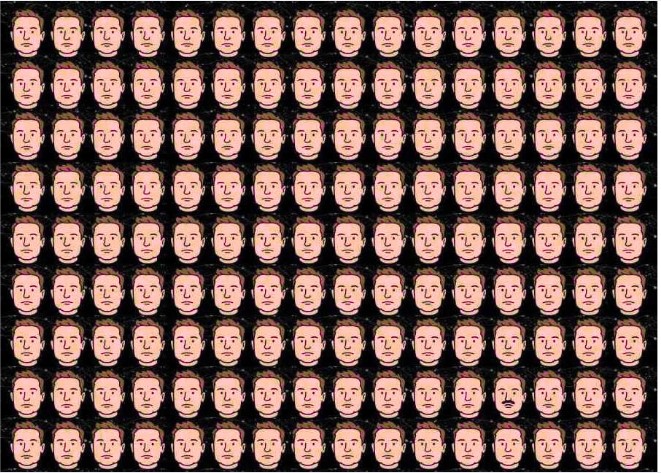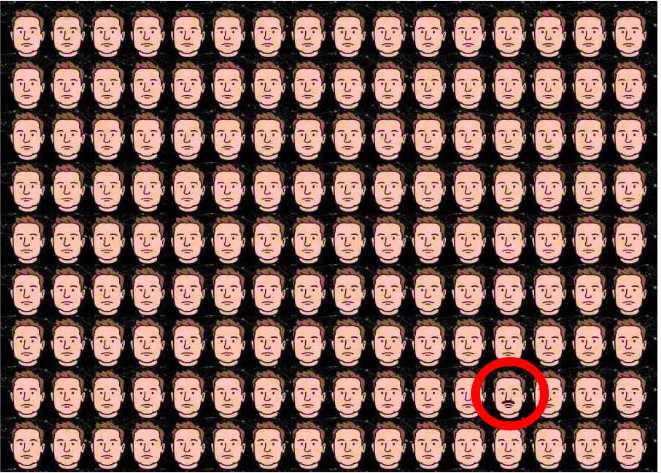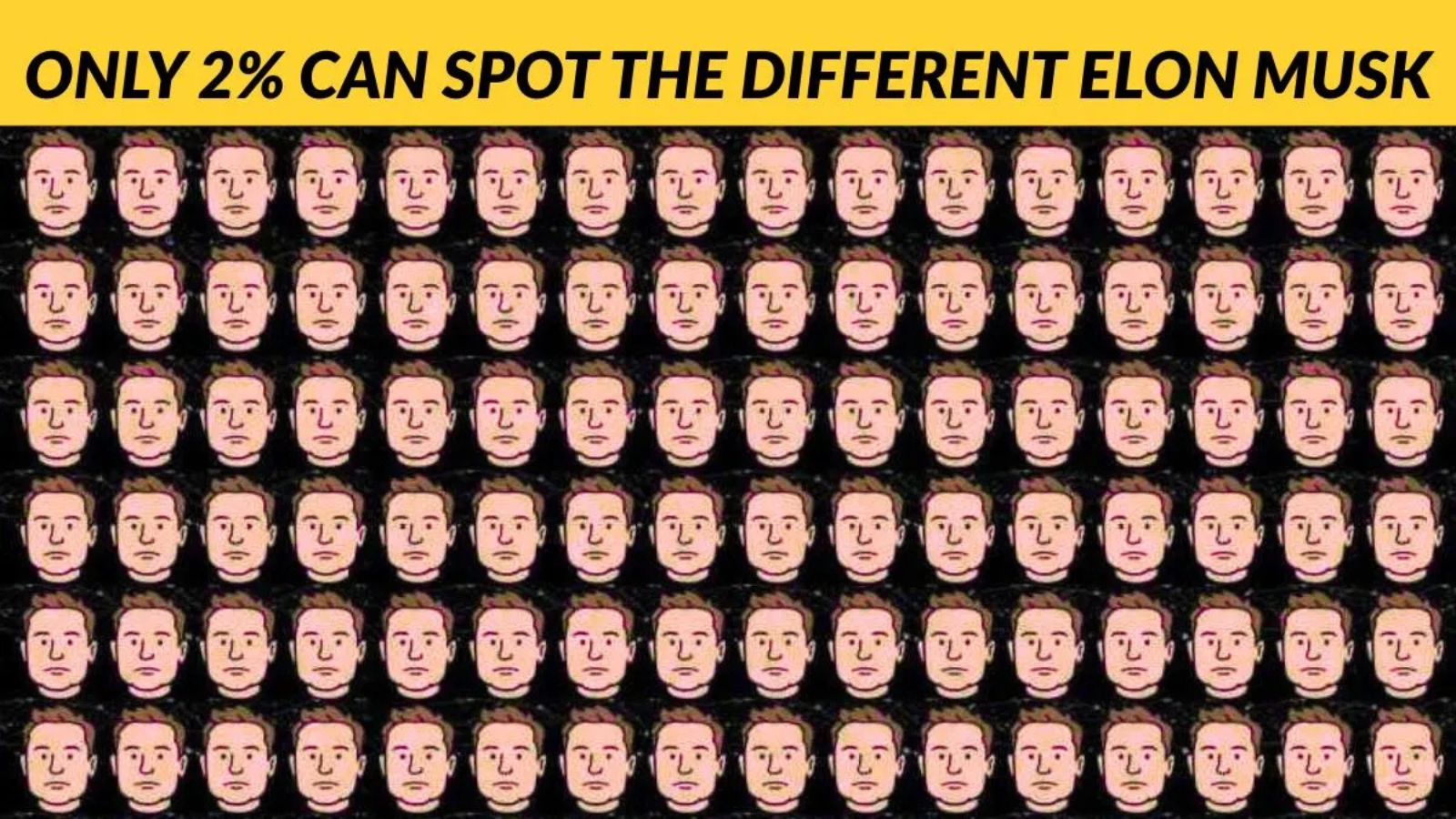In the digital age where viral content spreads like wildfire, few phenomena capture public imagination quite like optical illusions featuring celebrities. Elon Musk, the billionaire entrepreneur behind Tesla and SpaceX, has become an unlikely star in the world of visual tricks and brain-bending imagery. From the famous Thatcher effect to logo design corrections, Musk-related optical illusions offer fascinating insights into how our brains process visual information.
The Thatcher Effect: When Musk’s Face Becomes Nightmare Fuel
The most famous Elon Musk optical illusion utilizes what psychologists call the “Thatcher effect,” named after a 1980 study featuring former British Prime Minister Margaret Thatcher. This phenomenon demonstrates how our brains struggle to process facial features when a face is presented upside down.
The Musk version of this illusion appears deceptively normal at first glance when viewed upside down. The image shows what seems to be a typical photograph of the tech mogul, albeit inverted. However, when you rotate the image 180 degrees to view it right-side up, a disturbing truth emerges: Musk’s eyes and mouth have been digitally flipped while the rest of his face remains normal, creating an unsettling, almost grotesque appearance.
This illusion went viral across social media platforms, with users expressing shock at how easily their brains were fooled. The effect works because our visual processing system has evolved specific mechanisms for recognizing faces that become significantly impaired when those faces are inverted. We rely heavily on the overall configuration of facial features rather than processing individual elements in detail when viewing upside-down faces.
The Science Behind Face Recognition

Human beings are remarkably sophisticated at recognizing faces – it’s one of our most developed visual skills. From birth, we’re hardwired to identify and distinguish between different faces, a ability crucial for survival and social interaction. However, this system has its limitations, particularly when faces are presented in unusual orientations.
When we view a face right-side up, our brains automatically engage what researchers call “configural processing” – we analyze the spatial relationships between features like eyes, nose, and mouth. This allows us to quickly identify individuals and detect even subtle emotional changes. However, when a face is inverted, this sophisticated system largely shuts down, forcing us to rely on more basic feature-by-feature analysis.
The Thatcher effect exploits this vulnerability. When individual features are flipped while maintaining the overall face structure, our impaired inverted-face processing system fails to detect these local distortions. Only when the image is rotated to its normal orientation does our configural processing kick in, immediately revealing the disturbing manipulations.
The X Logo: Fixing a Billion-Dollar Optical Illusion
Musk’s relationship with optical illusions extends beyond viral memes to serious design challenges. When Twitter was rebranded to X in 2023, the new logo initially suffered from what graphic designers recognized as the Poggendorff illusion – a visual phenomenon where intersecting lines appear misaligned when partially obscured.
The original X logo, based on a Unicode character, appeared visually unbalanced to many viewers. Graphic designer Will Paterson identified the issue, explaining that the intersection of the X’s diagonal lines created an optical illusion that made the logo appear skewed, even though it was mathematically perfect.
This wasn’t merely an aesthetic concern – for a platform used by hundreds of millions of people daily, visual clarity and balance are crucial for brand recognition and user experience. A logo that appears “off” can create subconscious unease and undermine brand credibility.
Interestingly, Musk and his team eventually addressed this issue by adjusting the logo’s proportions. Rather than following Paterson’s original recommendation to move elements horizontally, they opted to shift parts of the X vertically, demonstrating that even billionaire tech moguls must grapple with the fundamental principles of visual perception.
Musk’s Unique Visual Processing Abilities
Beyond being the subject of optical illusions, Elon Musk himself possesses what many consider extraordinary visual processing capabilities. Biographer Ashlee Vance documented Musk’s unusual ability to visualize complex three-dimensional objects and systems in his mind with remarkable clarity and detail.
Musk has described his thought process as having a “graphics chip” – the ability to see objects, replicate them mentally, and imagine how they might behave when interacting with other elements. This visualization skill allows him to understand complex relationships between acceleration, momentum, and kinetic energy in ways that many find difficult to grasp.
This exceptional spatial intelligence likely contributes to his success in industries requiring complex engineering and design, from electric vehicle development to rocket engineering. His ability to “see” problems and solutions in his mind’s eye represents a form of visual processing that goes far beyond typical human capabilities.
The Psychology of Celebrity Illusions
Why do optical illusions featuring celebrities like Musk become so viral? The answer lies in our psychological relationship with famous figures. Celebrities occupy a unique space in our consciousness – they’re familiar yet distant, real yet almost mythical.
When we encounter a celebrity in an unexpected context like an optical illusion, it creates cognitive dissonance. Our brains struggle to reconcile the familiar face with the unusual visual experience, creating a memorable and shareable moment. This explains why celebrity-based illusions often generate more engagement than similar tricks featuring unknown individuals.
The Musk illusions tap into additional psychological factors. As one of the world’s most recognizable entrepreneurs, Musk represents innovation and technological advancement. Seeing him become the subject of a mind-bending visual trick creates an interesting juxtaposition between cutting-edge thinking and the ancient limitations of human perception.
The Broader Impact on Digital Culture
Elon Musk optical illusions represent more than entertainment – they’re windows into how our brains process information in the digital age. As we increasingly consume visual content through screens, understanding these perceptual limitations becomes crucial for designers, marketers, and content creators.
These illusions also highlight the importance of visual literacy in an era of digital manipulation. As deepfakes and sophisticated image editing become more prevalent, recognizing how our visual processing can be fooled becomes a valuable skill for navigating modern media landscapes.
Educational Value and Applications
Teachers and cognitive scientists have embraced celebrity optical illusions as educational tools. The Musk Thatcher effect serves as an engaging way to introduce students to concepts in psychology, neuroscience, and visual perception. By using a recognizable figure, educators can capture student attention while demonstrating complex scientific principles.
These illusions also provide insights valuable for technology development. Understanding how human visual processing works – and where it fails – informs the design of everything from user interfaces to autonomous vehicle systems. If our brains can be fooled by simple image manipulations, imagine the challenges facing artificial intelligence systems trying to replicate human visual understanding.
The Future of Visual Perception
As technology continues advancing, the relationship between optical illusions and figures like Elon Musk may become even more complex. With developments in virtual reality, augmented reality, and brain-computer interfaces (including Musk’s own Neuralink project), the lines between perception and reality are increasingly blurred.
Musk’s companies are actively working on technologies that could revolutionize how humans process visual information. Tesla’s autonomous driving systems must navigate the same perceptual challenges that fool humans, while Neuralink’s brain implants might eventually allow direct manipulation of visual processing.
The Enduring Appeal of Visual Tricks

The popularity of Elon Musk optical illusions reflects our enduring fascination with the mysteries of human perception. These simple yet powerful demonstrations remind us that even in an age of technological sophistication, our brains remain wonderfully, remarkably fallible.
Whether it’s the disturbing revelation of the Thatcher effect or the subtle design challenges of the X logo, these visual phenomena offer valuable insights into both the power and limitations of human perception. As we continue pushing the boundaries of technology and visual experience, understanding these fundamental aspects of how we see and process the world becomes increasingly important.
The next time you encounter an optical illusion – featuring Elon Musk or anyone else – take a moment to appreciate the complex dance between your eyes, brain, and consciousness that makes such tricks possible. In a world increasingly dominated by artificial intelligence and digital manipulation, these reminders of our human limitations are both humbling and fascinating.
